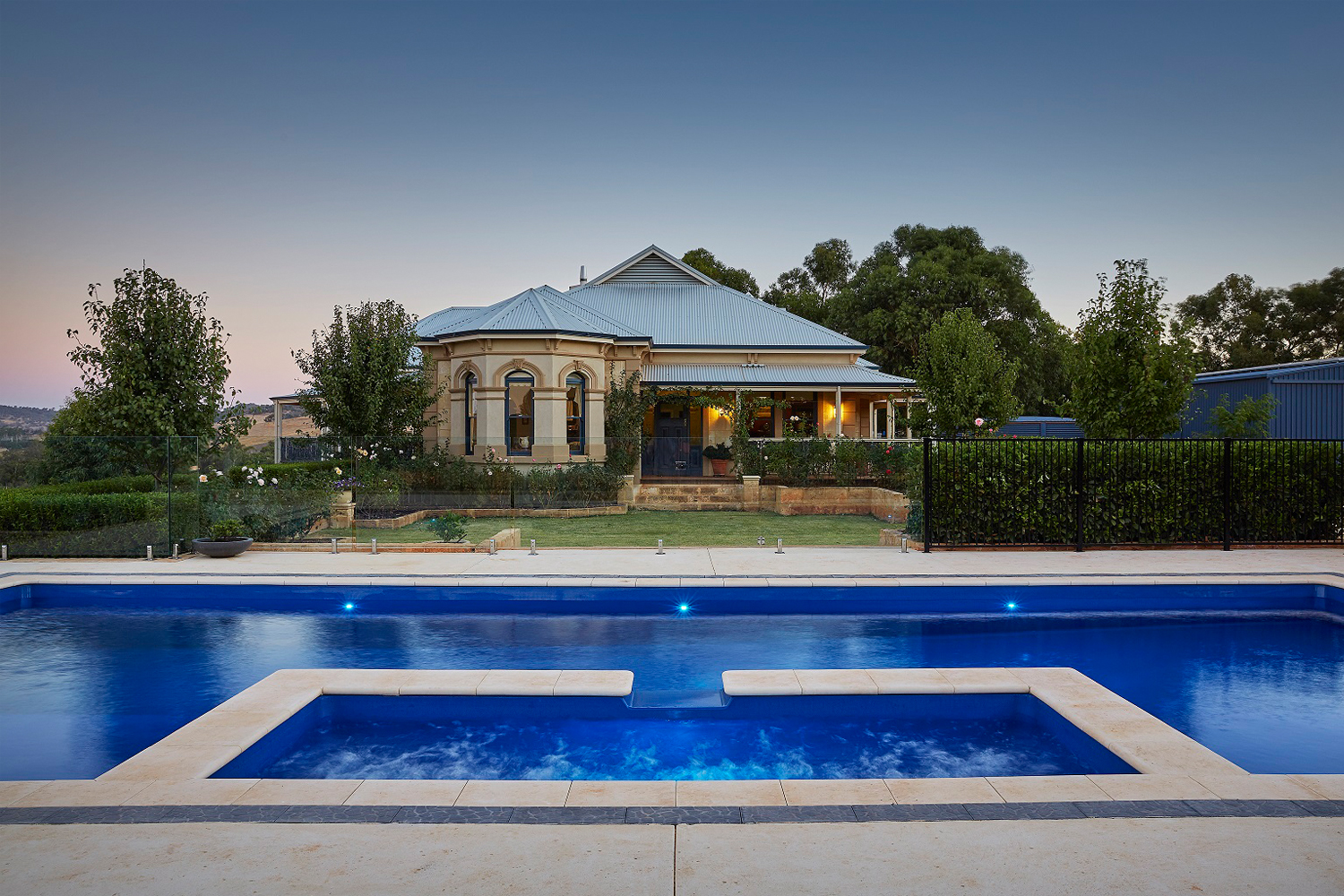Although pools are getting smaller, their lifestyle value is still as big as ever. Complete Home Expert and principal of A Total Concept Landscape Architects + Swimming Pool Designers John Storch explains everything you need to know about small pool design
With more people living in urban environments and a tendency towards higher-density living, residential outdoor spaces are becoming smaller. However, owners still want these spaces to be multipurpose and to be both functional and aesthetically pleasing. This desire to fit everything in has put pressure on the amount of space available for traditional-sized swimming pools.
The answer is a smaller pool. These can include plunge pools, lap pools, courtyard pools, swim spas with swim jets and oversized spas. As a result of council rules becoming more stringent about the amount of space available for development on each property, a rise in pool costs and environmental concerns about water and chemical use, smaller pools are becoming popular. This is also because the function of a pool has changed. An increasing number of homeowners desire a pool for a quick dip rather than lap swimming. Plus, we are seeing a trend where gardens are being used for outdoor entertainment and additional living space rather than the standard 4.5m x 9.5m swimming pool of yesterday.
What homeowners are starting to become aware of is that the length or size of the pool is not important for the average family’s backyard. When children are young, say up to age six, they tend to be limited to the pool steps, pool benches or mum’s lap, so the size of the pool is irrelevant. Children between six and 12 tend to swim, racing each other up and down, and play pool games, so the size of the pool has importance at this time. Adults and families with teenage children tend to utilise the benches and seats for relaxing, having a drink and socialising or simply jumping in the pool to cool off on a hot summer’s day. So a larger pool is often only used by children for a limited time.
Homeowners are using their outdoor spaces differently now. The pool no longer takes up a majority of the area and entertaining spots are being integrated with the pool. An outdoor room may be centred around the pool and include a spa, sauna, water feature, cabana and other covered areas, barbecue, pizza oven, daybed, beautiful exterior furnishings for relaxing and reading, a firepit for night use and, of course, the traditional paved (or timber deck) entertaining area, lawns and gardens.
Design for small pools
Good design for small pools is more important than that of their larger counterparts because everything must be perfect. The design of a large pool is more forgiving, whereas design of small spaces must be 100 per cent correct. Design flaws and imperfections can’t be hidden in a small pool. Here are some basic pointers to ensure the design is just right.
- Clean simple lines and functions will work best. Cluttered designs don’t work well for small pool designs or for small spaces.
- A pool in a small area should be designed to double as a water feature and to act as a focal point, especially at night with the addition of lights.
- Use either very dark colours to make
- bold statements or very washed-out colours to help the pool blend into the overall outdoor space. Mid-range blues that are
- very popular with traditional pools seem
- to lose effect in small pools.
- Small pool design is becoming less complicated, utilising straight, clean lines and monochromatic colours rather than busy shapes and colour mixes. People are looking for value and quality — the wow factor in the finer details rather than in the size of the project. We’ve been doing a lot with chunky square edges to create shadowlines around small pools, using some unusual colour interiors and creating entertaining and relaxation spots around pools with paving alternatives.
- In smaller pools, the base is flat and the depth increased at the shallow end to allow total submersion and a cooler plunging experience in summer. The depth of the pool may be set at 1500mm throughout.
- Tiles are often used in small pools as the surface area is reduced. This means the cost of using a more expensive finish lessens proportionally.
- Flush edges should be used to bring
- the water level of the pool up to the same level as the coping and allow the water to flow out of the pool to be recirculated through a grate.
- Especially in a courtyard situation, a small pool is often used as a feature and may incorporate falling water over textured surfaces or stainless steel.
- Use good-quality surrounds — either travertine, basalt and granite and local sandstone, or quality large-dimension timbers (200mm x 50mm).
- Pool design is often dictated by the
- house design, allowing the pool to integrate with the residence.
- Seats and benches in more traditional pools tend to run along one side. In smaller plunge pools, we like to make them turn the corner to create an entertainment nook where people using the pool can sit facing each other. We find this to be a great social configuration for a pool.
About John Storch
John Storch is principal of A Total Concept Landscape Architects + Swimming Pool Designers, a multi-award-winning practice he established in 1993. John specialises in the integration of external areas for projects ranging from family homes to boutique and resort-style developments in Australia and overseas.
For more information
Written by John Storch
Originally in Outdoor Rooms Issue 37






















